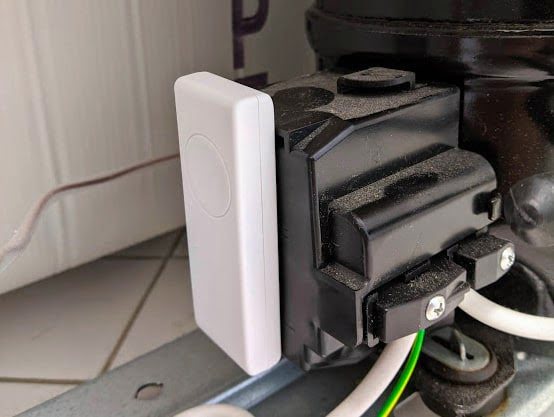Whether consumer-oriented or industrial, fridges play an important role in both private and corporate lives. Without them, the entire cold chain industry, restaurant chains, and kitchens in homes would be back in the 18th century – unable to store vegetables, meat, and pretty much everything perishable for a longer time and also, the absolute worst: having to serve warm beer in the summer.
But even nowadays, these misfortunes can and do happen almost daily around the world but the emerging IoT industry can play a significant role in reducing the count of these incidents.
With simple devices (such as our SimplePack or SimplePack Plus) that are not dependent on being powered from the socket, fridges and coolers can be monitored and if they stop working for any reason, the personnel (in case of commercial machines) or YOU (in case of home fridges) can be notified in time to solve the issue and save your precious food.
We’ve recently performed a test and finalized a simple step-by-step PoC/test scenario which you can use to set up to monitor your fridges or coolers efficiently and almost effortlessly. Since the cost of food rotting away can be immense (especially in storages, where large volumes of food are packed in a single cooling machine), deploying devices that cost low tens of Euros a piece can be a great time-, stress- and money-saver.
So here’s how we did it:
1. First, we chose a device that best fits what we wanted to do – in our case, we decided to go for the SimplePack Plus. The device lasts for 30 000 messages, which translates to 10+ years if set up correctly. We came to the conclusion that the best way to monitor fridge usage would be to monitor the vibration of the fridge compressor – an article about mounting the device using tapes is here: ask.simplehw.eu/tapes
You can also opt for using a magnet that is attached to the device by a double-sided tape, which is what we did. One device on the compressor can be combined with another device inside the fridge monitoring precise temperature, but not necessarily.
2. Then, we needed to make sure we had the right calibration – the device measures vibration with the accelerometer, so we tested various accelerometer sensitivity settings ranging from 3 to 10. The device was in Guard me mode with sleep time shortened from the default one minute to 10 seconds – this would allow us to receive messages consistently when the compressor was on – and the goal was to find the perfect balance between picking up every single time the fridge mechanism was on and reducing any false alerts to a minimum (the compressor on our fridge doesn’t work 24/7, it turns on and off during the day). The best sensitivity setting for our fridge, determined by trial and error, was 5.
3. After the calibration is done, the device can now be switched to the final deployment mode – Track me (Trace me can also be used). Track me will send a message when movement is detected and will also send a message some time after movement stops – this means that when the compressor turns on, you will get notified and also when it stops and doesn’t work for a period of time you can adjust, you will receive another message. Trace me can be used as well, preferably with a long tracing interval – this will make the solution more robust as you will not be affected by potential message loss but will also deplete the battery faster. It’s also possible to use Track me and set up repeating alerts – more on that functionality in our documentation here: Mode independent information and events.
If you’re not sure what mode to use, you can contact us through our mode selection wizard and we will get back to you with the best settings. The wizard can be found here: ask.simplehw.eu/use-case-definition
4. Done!
Tips and tricks:
Eliminating false alerts – door bangs
If you want to eliminate recording fridge door bangs in the PoC, sample the vibration only once every 2 minutes which significantly reduced the probability of the device capturing the bang. The worst case is that the non-moving compressor would be reported in the next window – within 2 minutes. For mass field deployment, we would release an adjusted firmware that would ignore short term vibrations.
Recognizing the pattern for preventive maintenance
If you want to monitor vibration patterns for preventive maintenance, we are able to use Machine Learning/AI algorithms that analyze the raw data instead of sending them right away and can filter and send only predefined or before-seen patterns. This is available in the Advanced Edition SimplePack Only.

Best wishes,
Simple Hardware team